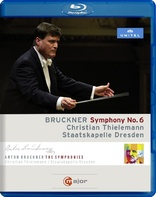
The 2015 Munich concert year began at the end of January with two highlights: two performances of Bruckner's Sixth Symphony with Mariss Jansons conducting the Symphonieorchester des Bayerischen Rundfunks. The live recording, previously reserved exclusively for subscribers to the orchestra, is now being released on album by BR-KLASSIK - an outstanding interpretation of one of the most important compositions in the Late Romantic symphonic repertoire. For a long time, Anton Bruckners Sixth Symphony (along with his Second) was regarded as something of a poor relation in his immense symphonic oeuvre, even though the composer himself had moodily referred to it as his ""boldest"". In view of its performance figures and recordings over the decades, this has now changed significantly, and the work has earned itself a permanent place in the repertoire. The Sixth Symphony forms part of the creative process of the two preceding symphonies, the ""Romantic"" Fourth (1874/1880) and the Fifth (1875), and is now seen as an important preliminary stage in Bruckners last great upsurge that followed the composition of the ""Te Deum"" and culminated in the sublime grandeur of his final symphonies, the Seventh, Eighth, and Ninth. Bruckner worked on his Sixth Symphony in A major (WAB 106) from September 24, 1879 to September 3, 1881. He was only able to hear the complete work at one orchestra rehearsal during his lifetime because only the two middle movements (Adagio and Scherzo) were publicly performed in the concert hall of the Vienna Musikverein on February 11, 1883. The first public performance of the symphony as a whole followed only on February 26, 1899 - two and a half years after the composers death. It was conducted by Gustav Mahler, who had, however, made changes to the score, presenting it in a radically shortened version.
 淘宝店铺:http://94hd.taobao.com
淘宝店铺:http://94hd.taobao.com